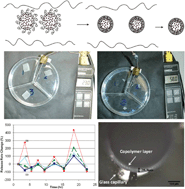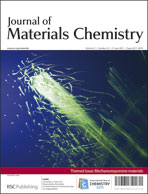In this article we review recent results on the applications of stimuli-responsive polymers in fields such as development of drug carriers and active microfluidics. A special emphasis has been put on poly(N-isopropylacrylamide) (PNIPAM) and the related water-insoluble copolymers poly(methyl methacrylate/N-isopropylacrylamide) [P(MMA/NIPAM)] and poly(methyl methacrylate/N-isopropylacrylamide/acrylic acid) [P(MMA/NIPAM/AAc)] for the ease of their tunability and “smart” behaviour triggered by the change of temperature and pH. In particular, we discuss formation of PNIPAM nanoparticles loaded with fluorescent dye (as a model drug), which change the release rate in response to the temperature variation. We also describe nanofibers with PNIPAM nano-“raisins” facilitating the release rate on demand. Then, we consider synthesis and operation of water-insoluble thermo- and pH-sensitive hydrogels, which can be used either as nanofibers for drug release, or as components of microscopic devices changing surface wettability and volumetric flow rate in membranes and microchannels, as well as can be potentially used for development of self-cleaning micro- and nanochannels and fibers which shake loose deposits on demand.

You have access to this article
 Please wait while we load your content...
Something went wrong. Try again?
Please wait while we load your content...
Something went wrong. Try again?


 Please wait while we load your content...
Please wait while we load your content...